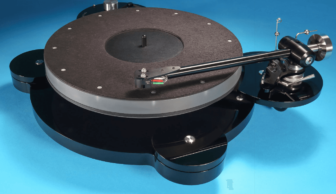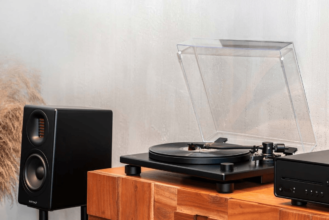REGA PLANAR 10 Review: Analog Judgement
A finely judged turntable package from Rega lifts analogue to its best, thinks Noel Keywood. Read our REGA PLANAR 10 Review.
Rega’s RB300 arm was always one of my favourites. A unique one-piece design, it was easy to use and affordable yet gave superb sound, mainly due to its rigidity. The Planar 10 turntable I’m reviewing here gets a modern update: the polished aluminum RB3000, supported by a two-speed turntable on a vestigial plinth, accompanied by an external electronic power supply. The price was £ when fitted with their Apheta 3 moving coil cartridge, as ours was.

While Rega’s arms have been consistent in basic design patterns, their turntables have differed more widely, and the Planar 10 maintains this thrust. It is still a belt drive with a small hub and top platter, but the plinth has shrunk to minimal size and weight while retaining rigidity. Weighing just 4.7kg, moving is easy, especially with the heavy ceramic platter removed. The three feet are non-adjustable for height and possess little damping, so I recommend using this deck on a firm and level surface, such as a marble slab or perhaps a sand-filled two-part shelf. A nice project for DIYers!

Being light and compact, however, with dimensions of 429mm wide, 315mm deep and 125mm high (dust cover on) it can be slotted in places other turntables cannot go, a plus point. The simple formed acrylic dust cover must be removed completely during use, having the advantage of not demanding top clearance of hinged lids, again reducing space demand. But you must put the cover nearby, perhaps standing it vertically on a shelf.
The plinth carries 24V a.c. motor fed by an external power supply – and the latter is large, measuring 218m wide, 320mm deep, and 80mm high, weighing 3kg. It must be within 1m length (3ft) of the turntable’s connecting cable and accessible since speed select is located here, as well as speed adjust at the rear, should it be needed.
The Planar 10 pays more attention to the issue of speed and speed stability than previous models, perhaps as Technics have drawn attention to it with their recent SL-1200GR and SL-1200GAE Direct Drives that deliver class-leading figures.
The Planar 10 was speed accurate and stable as belt drives go, and our measurements showed, if not quite, up to Technics Direct Drive standards.
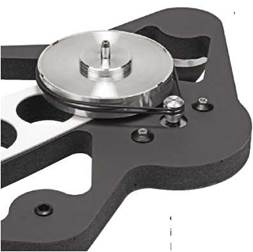
But there is more to a turntable than just speed stability – and Rega’s glorious arm and impressive Apheta 3 cartridge had a big part to play in what I heard from this package; Technics having no answer to this except in after-market re-fits such as those from Sound Hi-Fi.
As Rega claims for Planar 10, our review sample was right on the correct speed. Speed can be changed however, at rear and in small increments, Rega suggesting use of the RPM ‘phone app for anyone wanting to do this, or their own quartz locked stroboscope light and disc.
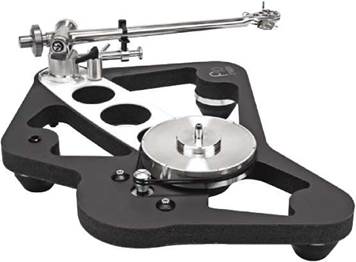
In case you are wondering, the Planar 10 is all manual; there are no auto systems. Press the power supply’s 33 or 45rpm speed buttons to start, then manually place the arm on LP using the damped lift/lower platform. I hand cue and found the RB3000 has a peculiarly short and strongly curved finger lift I don’t recall on the RB300; it did not suit my digit, but if you have diddly digits, it may.
The build quality is very good, and the RB3000 arm is superb. It is strapped to the platter main bearing to prevent relative movement between the two, and I would guess Rega has made the plinth vestigial so as not to store energy. I also suspect the heavy ceramic platter contributes to sound because platters seem to do this. My favorite platter material is thick acrylic (Perspex, etc), not metals or glass. I’ve not heard of a heavy ceramic platter before and wonder whether it contributes to stage depth and firm bass.
SOUND QUALITY
I connected the Planar 10 to our Icon Audio PS3 Mk2 valve phono stage with its super-quiet input transformer. It fed an Icon Audio Stereo 30SE single-ended valve amplifier via Chord Company Epic interconnects. Loudspeakers were Martin Logan ESL-X hybrid electrostatics hooked up with Chord Company Signature Reference cables.

Spinning Fanfare for the Common Man, from Two Countries One Heart, a 180gm all-analog LP with superb balance, I was immediately engaged by the strength and suppleness of the opening drum rolls, hearing the powerful but tight bass so many crave. There was insight, too, and the track came over as atmospheric. Horns were rich and resonant, blaring from a deep background. As the grooves slipped by I also became aware of a softly smooth rendition free from spit or groove noise; the Apheta 3 cartridge has a mild top end delivery that makes it gentle in the high regions.
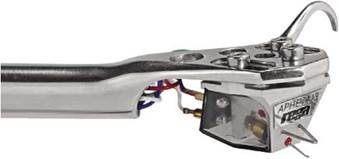
With Time to Say Goodbye, on inner grooves where things can get a bit muddled with a poor stylus, the Apheta 3 maintained its composure, Rosella Caporale’s soaring vocal firm and clear, unmuddled by inner groove hash. I use this LP as a balanced benchmark – and Rega’s Planar 10 delivered it in fine form, with massive low-end power, superb stage depth, and mild yet refined treble. This was a supremely enjoyable listen, and it was 100% analog.
Enthused, I put on the Direct Cut of Sing Sing Sing, from the Syd Lawrence Orchestra, from Big Band Spectacular – and it was just that – spectacular. The live fast drum work came over with grippy timing and resonant power, pushing out at me with eye-popping drama. In a recent, miked-up live studio recording, I heard the background acoustic and – again – great atmosphere. It was like being there. The Planar 10 is smooth, clean, and muscular in dynamic contrast. Edginess, noise, sibilance, or spit were absent, making for a seemingly ‘quiet’ rendition. Less, but more.
With straight Rock from Dire Straits, courtesy of Mobile Fidelity’s 45rpm all-analog re-master of Love Over Gold, finger-picked guitar strings cut out cleanly in The Man’s Too Strong, Knopfler’s crashing chords have an impact without muddle.
CONCLUSION
Rega’s Planar 10 is very much an analog turntable. Yes, they all are, but some push closer to CD balance.
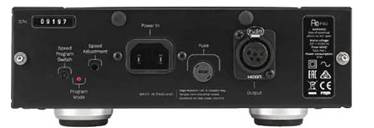
Not this one. It’s buttery, bass-powerful, and lush with great stage depth, pin-sharp imaging, and no sign of noise – due substantially to the Apheta 3 cartridge in a great arm. The Planar 10 is a wonderfully judged analog spinner well worth hearing. It is mild up top, but I could live with it all the same.

Measured performance
The 3150Hz test tone of a DIN 45-452 test disc was reproduced as exactly 3150Hz on our Wow&Flutter meter, with a little wander of +/-2Hz Hz around nominal.
Low-speed wander results in low Wow (low rate speed variation), the Planar 10 hovering around 0.1%, and Flutter 0.05% – good results. Total Wow&Flutter (DIN weighted) measured 0.07%, again a good result. Measured to the Japanese JIS Standard for comparison with Japanese turntables, the total Wow&Flutter (wtd) was measured at 0.05%. JIS always gave a lower reading than German/European DIN. Our analysis shows the usual peak at 33rpm (0.55Hz), low-ish level, harmonics, and minimal flutter (right).
The frequency response of the Apheta 3 cartridge shows pronounced roll down in high frequencies, enough to give a mild sounding balance, likely full-bodied though, and with strong bass. Inner groove tracing loss (red trace) was minimal due to effective stylus geometry – an excellent result.
Speed error 0%
Wow 0.1%
Flutter 0.05%
Wow & Flutter (DIN wtd.) 0.07%
Tracking at 2gm VTF was good, with slight mistracking occurring on the 80 muy m (outer) band of Clearaudio’s trackability test record LPT 83063 – but this is a high cut. The 90 muy m band caused severe mistracking.
The Planar 10 turntable measured well, and the Apheta 3 is distinctive in frequency balance.
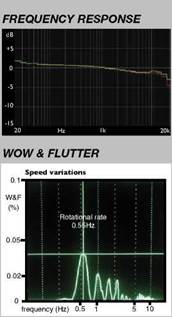
VERDICT
Rega Planar 10 Turntable | The Ultimate REGA Turntable
Rega is known for its fantastic line of audio products and it's fair to say that they excel when it comes to turntables. Our good friend ...



